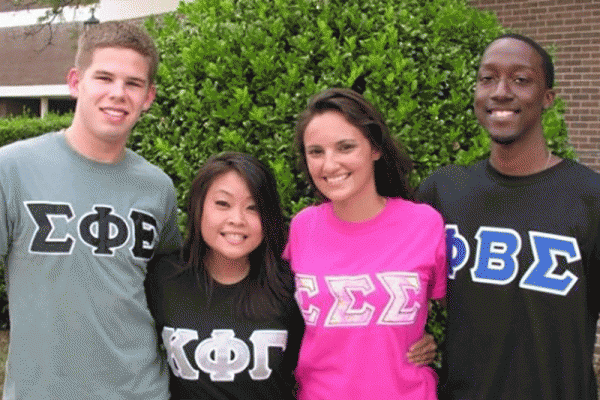In attending university both in the US and Australia, I have encountered several differences in my education experiences. These span from cultural difference to academic and have completely influenced and coloured my college experience.
Going to University is, aside from buying a house, the biggest financial decision of many people’s lives. Therefore, it is important to realize your options and which type of environment will give you the best results with the most personal growth.
International study gives you a real taste of what that particular culture is like. Many international students choose to live in the country of their university for years after they graduate. This is also a great way to ease into migration, since going to school in a different country serves as a trial period. A ‘try before you buy’, if you will.
I went to one of the top five universities in the U.S. and the top university in Australia, both for masters’ degrees. Therefore, some of my opinions about undergraduate study will be skewed, but I can tell you many cultural differences between these two graduate schools based on my experience.
Cultural Difference
1. Being an international student vs. being a local: When you put yourself in a foreign situation, you are more likely to take risks and meet more people that you normally wouldn’t if you were comfortable. This can have a huge positive impact on personal growth, understanding identity and getting to know people from various backgrounds.
My ability to network as an international student was far greater than as a local one. Not only did I meet more people from where I was studying, but from other parts of the world. Therefore, I was more inclined to meet other foreigners, because I was foreign as well.
I also found that I was much more eager to talk to my teachers outside of class as an international student. I am not quite sure if this was because Australians are known for being friendly, but since I had come all the way here to study, I felt more compelled to speak up, and to take all opportunities to get to know my lecturers.
2. Student Government: Both schools had a font of resources and activities when it came to clubs and organizations. I found that in Australia, student government and a personal campaign approach was the norm. This is probably a result of the voting culture in Australia, where everyone is fiscally responsible for voting. In the states, student government was far more contained and impersonal.
3. Sports: College football, baseball, basketball, rowing, lacrosse, soccer, swimming, tennis, track and field, etc. are HUGE in the states. These games/matches/meets are major social events for students, which bolster school spirit. I have not once heard of a game at my Australian uni to go to. I don’t even know what their mascot is, and I studied there for twice as long as I did at my U.S. graduate school.
4. Gym/Athletic Facility: Most colleges in the U.S., from what I understand, give students a gym membership with their tuition fees. Australian Uni gyms cost extra. However, this might depend on the school you go to.
5. Greek Life: There are a substantial amount of fraternities and sororities (so called, Greek Life) in the U.S., focused on brotherhood/sisterhood, fundraising, parties, team building and philanthropy. Contrary to the huge actual Greek population in Melbourne, there are no sororities or fraternities there.
6. Housing: Many more students in the U.S. opt for student housing than in Australia. In fact, living in dorms is a huge part of college life in the U.S. Boarding at school in Australia is optional, and while it can be really great to do, it is not the same vibe as in the states. While immensely distracting, college dormitories serve as a home where you gain 15 lbs. while learning to cook, share a room with someone you have never met, go to parties and late night study groups with classmates and become a part of some school spirited ‘house pride’.
7. Many Options – Near or Far: Many U.S. college applicants choose to go interstate and live on campus several hours from where they grew up. It is extremely common in the states to apply to 10 schools all around the country. This ability to move, near or far from where one is from gives local U.S. college entrants more freedom, and also increases the interstate diversity at each school.
Also, there are so many different subcultures among different states in America, where you can engage in activities you may have never even heard of just a few hundred miles away. This speaks more about American culture than school culture. For example, moving from Florida to Louisiana (which are practically next door to each other) could mean a world of cultural difference. You just don’t get that in Australia.
In addition, wherever you study in the states, there are heaps of opportunities to road trip to nearby cities. You are always driving distance from somewhere else that could be different and fun in a new way.
8. Merch: Every school that I went to in the U.S., I have a college hoodie from. I didn’t get one in Australia, partially because I am older, but also because they only had one option. Since the U.S. is more capitalist and materialistic, colleges take more pride in all their college gear. I remember an entire floor dedicated to bumper stickers, mugs, umbrellas, hoodies, sweatpants, polo shirts, golf balls, hats, slippers, and anything else you can imagine at my old schools in the U.S. Through consuming these products, I not only felt proud and exclusive, but I felt more involved in the campus community. I don’t know exactly what its like here for everyone who is wearing the same exact hoodie; if they feel that bond. But I felt pretty limited when it came to my consumer options for school merchandise in Australia.
9. College Towns: There are several small cities in the states that are dedicated to college. These towns/cities are often funky, smart, clean neighbourhoods with good food and a vibrant nightlife. Much of the revenue in these neighbourhoods is gained from students, so naturally these areas cater to what students want.






